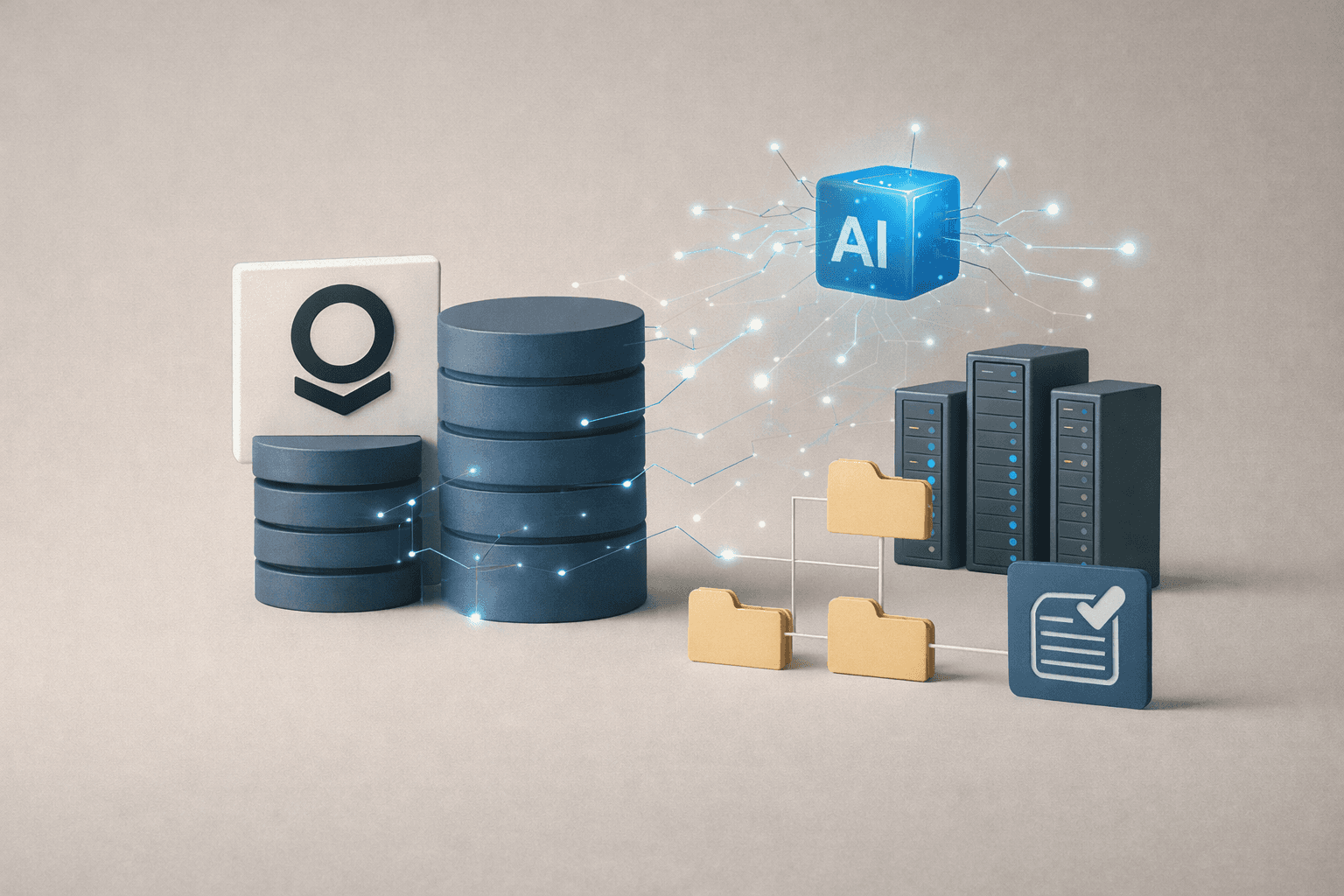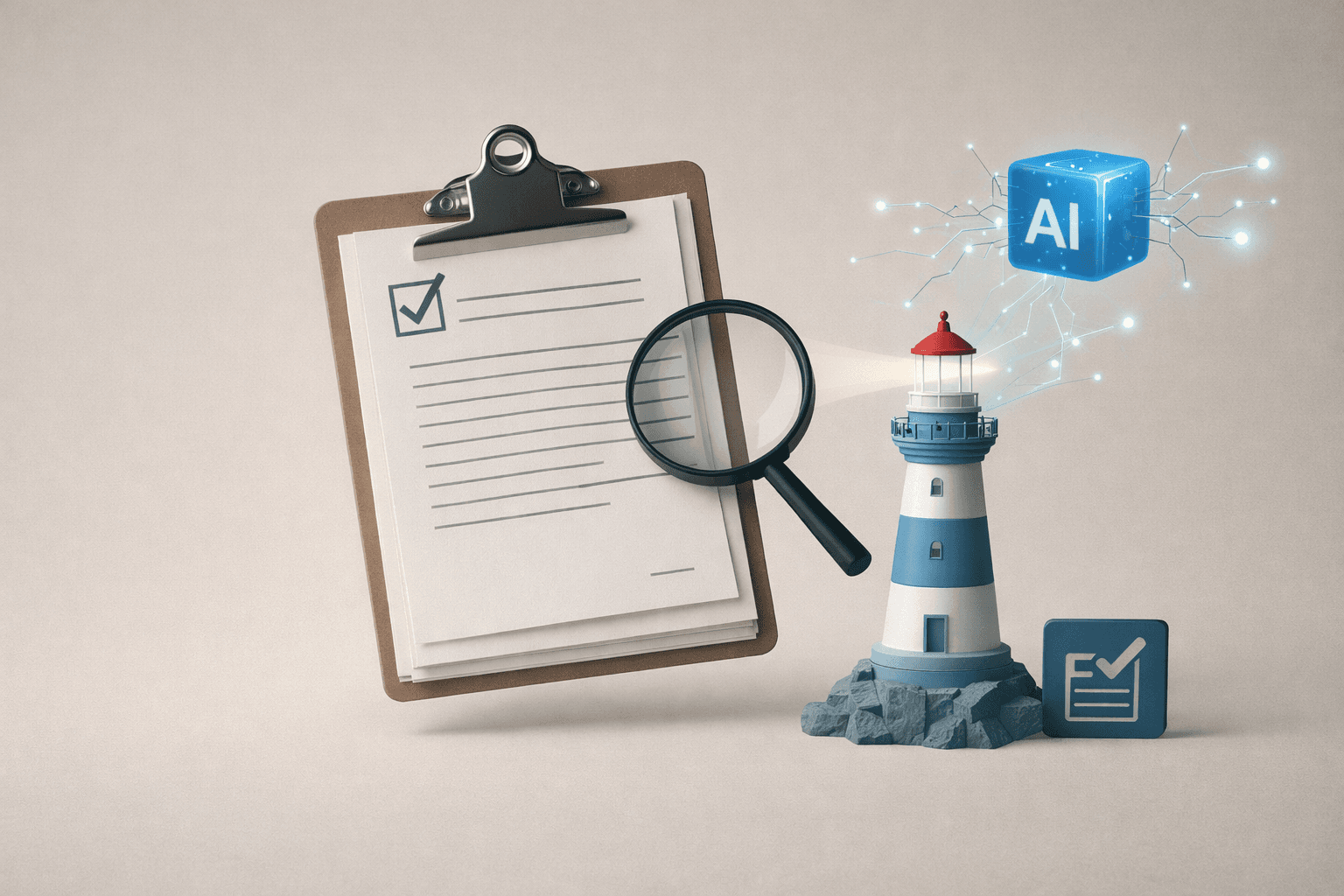Insight
Enterprise AI: Strategy, Use Cases, and Infrastructure for Secure Adoption
Sep 26, 2025
Why Enterprise AI and Why Now?
From Experimentation to Core Systems
AI has evolved from an experimental technology into a foundational layer of enterprise IT strategy. It now powers mission-critical operations across logistics, financial services, legal departments, and customer-facing roles. With advancements in foundation models, particularly Large Language Models (LLMs), and open-source frameworks like LangChain and LlamaIndex, enterprises have access to modular, customizable tools that can be adapted to their workflows. This has significantly lowered the cost, complexity, and time needed to go from pilot to production.
Growing Demand for Automation, Intelligence, and Competitive Edge
In today's fast-paced business environment, the ability to extract actionable insights from massive volumes of structured and unstructured data is a competitive differentiator. AI enables organizations to automate low-value tasks, enhance decision accuracy, and deliver faster, more personalized services to customers and internal stakeholders. As digital transformation accelerates, AI is becoming essential to driving productivity, resiliency, and innovation.
Core Components of an Enterprise AI Stack
LLMs, RAG, and Agent-Oriented Architecture
At the heart of most enterprise AI systems lies a modular framework composed of:
Large Language Models (LLMs) such as GPT, Claude, or LLaMA that interpret and generate natural language.
Retrieval-Augmented Generation (RAG) that connects LLMs to trusted, internal data sources for more accurate and context-aware responses.
AI agents that can chain together multi-step tasks across tools like Slack, Jira, Salesforce, and internal APIs using logic trees, memory, and goal-oriented planning.
Together, these elements provide the capability to scale knowledge work, automate workflows, and reduce reliance on manual data lookups.

Supporting Infrastructure and System Integration
Enterprise AI success depends on deep integration with existing systems, including:
Data Infrastructure: Data warehouses (e.g., Snowflake), lakes, APIs, and event-driven pipelines.
Application Layer: Integration with SaaS tools, custom dashboards, document management platforms, and more.
Monitoring & Logging: Performance monitoring, usage analytics, and real-time alerts for operational transparency.
These components ensure that AI models are not siloed but integrated with daily business operations.
Governance, Auditability, and Role-Based Access Control
Enterprise AI must be secure, transparent, and governed. Key capabilities include:
Granular access control to prevent unauthorized model interactions or data exposure.
Full audit trails of prompts, responses, user actions, and data accessed.
Policy enforcement aligned with industry regulations and internal standards.
These safeguards protect both the organization and its stakeholders from legal, reputational, and compliance risks.
Real-World Enterprise AI Use Cases
Automated Document Search and Summarization with Wissly
Wissly empowers teams to search across millions of words of internal documentation with natural language prompts. Users can retrieve specific clauses in contracts, locate HR guidelines, or summarize complex reports. It highlights answer spans, links to source files, and provides high-fidelity summaries—all without exposing data to external APIs. Teams in legal, compliance, research, and HR report dramatic reductions in time-to-insight.
AI-Powered Customer Support
AI assistants now triage support tickets, generate draft replies, and escalate urgent issues. By integrating with CRMs, AI systems reduce first-response time, improve SLA adherence, and relieve pressure from frontline support teams. Some organizations report over 50% reduction in average handling time using AI co-pilots.
Intelligent Content and Knowledge Generation
From drafting press releases to summarizing board meeting notes, LLMs streamline knowledge work. Integrated with brand guidelines, they ensure tone consistency. Some enterprises link AI writers with analytics platforms to generate campaign reports or sales insights autonomously.
Forecasting, Planning, and Risk Analysis
AI models are used to simulate future trends, conduct scenario planning, and detect anomalies in finance or logistics. By feeding them historical data and real-time inputs, leaders can anticipate changes and adjust strategies with confidence.
Agent-Based Workflow Automation
Enterprises are beginning to deploy autonomous AI agents that perform back-office operations like invoice processing, report compilation, and database updates—without human intervention. These agents can reduce labor costs and free up teams for strategic work.
Addressing Security and Regulatory Concerns
Data Privacy and Secure Model Deployment
Trust is the foundation of enterprise AI adoption. Strategies include:
On-prem or VPC model hosting to keep data within controlled networks.
Data masking/redaction to protect personally identifiable or confidential information.
Encrypted storage and transfer for all model inputs, outputs, and metadata.
Enterprises also implement secure inference pipelines that prevent data leakage and enforce strict access boundaries.
Compliance in Regulated Industries
Highly regulated sectors require AI systems to be auditable and compliant by design. Features include:
Versioned models with traceable outputs.
Customizable review workflows for legal, risk, and compliance teams.
Support for regional mandates like GDPR (EU), HIPAA (US), APPI (Japan), and PDPA (Singapore).
This allows enterprises to use AI without violating customer trust or government regulations.
Responsible AI and Bias Mitigation
Bias and unfair outcomes pose ethical and legal risks. Best practices include:
Bias detection audits using open-source tools like Fairlearn and Aequitas.
Diverse training datasets to minimize demographic and linguistic skew.
Explainability tooling like SHAP, LIME, and model cards to ensure decisions can be understood and challenged.
Enterprises should establish a Responsible AI framework that aligns with their mission and values.
Organizational Readiness and Change Management
Anticipating Resistance and Building Trust
Adopting AI reshapes job roles, decision rights, and team structures. Leaders should anticipate challenges such as:
Fear of automation replacing jobs
Mistrust in AI-generated outputs
Confusion about new processes
Strategies to overcome resistance include:
Running transparent pilots with clear goals
Demonstrating ROI quickly
Involving cross-functional champions in rollout planning
Upskilling and Training Programs
People are the key to scaling AI. Enterprises should develop:
AI literacy programs for non-technical users
Technical enablement for data and engineering teams
Simulation environments for experimentation and learning
This accelerates AI adoption and fosters a culture of innovation.
Cross-Functional Governance Models
Centralized AI governance prevents duplication, ensures policy alignment, and drives reuse. A strong governance body:
Sets standards for procurement, deployment, and performance evaluation
Tracks risk, bias, and system drift
Aligns AI use with business goals and ethical guidelines
This shared responsibility model enhances strategic coordination and risk management.
Infrastructure Strategy: Cloud vs On-Prem vs Hybrid
Comparison Matrix: Security, Cost, and Flexibility
Model | Pros | Cons |
|---|---|---|
Cloud | Fast setup, scalable, access to latest models | Data privacy concerns, ongoing subscription costs |
On-Premise | Maximum control, preferred for sensitive workloads | High setup cost, slower upgrades |
Hybrid | Flexible, combines security and agility | Complex to manage, requires careful integration planning |
Choosing Based on Compliance and Data Sensitivity
Organizations should evaluate:
Data classification policies (e.g., public, confidential, restricted)
Vendor auditability and contractual controls
Regional data residency requirements
For example, an HR chatbot may be fine in the cloud, but a legal document analyzer likely belongs on-prem.
Wissly as a Local-First AI Platform
Wissly provides an enterprise-grade RAG solution that runs entirely in local environments. It:
Supports air-gapped, offline deployments
Indexes and summarizes PDFs, Word docs, and more
Implements user permissions, access logging, and data encryption
Wissly is ideal for teams handling legal, regulatory, or IP-sensitive content.
Enterprise AI Success Checklist
Map AI initiatives to strategic goals and department priorities
Establish centralized oversight for tools, ethics, and risk
Invest in secure, scalable infrastructure aligned with data policies
Pilot small, measure success, and iterate quickly
Upskill your workforce and build cross-team AI fluency
Track outcomes and continuously improve models and workflows
Conclusion: AI-Driven Business Transformation Starts Now

AI is redefining how businesses operate, compete, and grow. From contracts to customer service, it transforms manual processes into intelligent systems. But successful AI isn't just about tools—it requires strategy, culture, and leadership.
Wissly helps enterprises unlock the full potential of AI—safely, responsibly, and efficiently. Start your enterprise AI transformation with confidence and control.
Recommended Content










